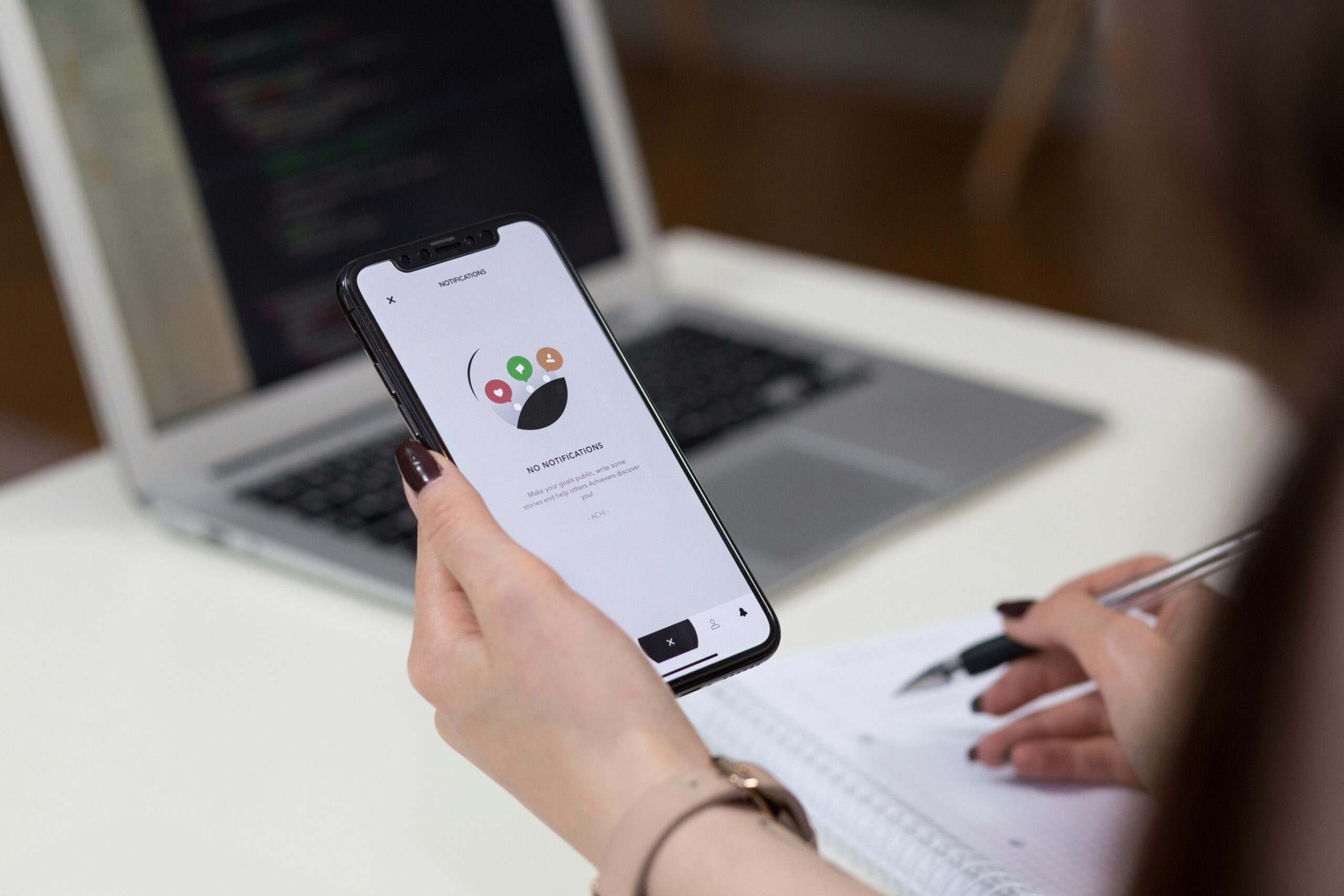Archetypes And Their Use In Mobile Ux
Unlocking the secrets to creating captivating mobile user experiences is like finding the perfect key to a treasure trove. Archetypes play a crucial role in understanding users’ behaviors, needs, and preferences in mobile app design. Join us on this enlightening journey as we delve into the world of archetypes and their powerful impact on mobile UX design. Let’s unravel how these timeless patterns can elevate your app’s success to new heights!
Archetypes And Their Use In Mobile UX
When it comes to creating a seamless user experience in mobile app design, understanding archetypes is key. Archetypes are universal patterns of behavior and characteristics that are deeply ingrained in human psychology. In the realm of mobile UX, these archetypes can provide valuable insights into how users interact with your app.
By identifying different user archetypes, designers can tailor their apps to meet the specific needs and preferences of various user groups. This personalized approach leads to increased user engagement and satisfaction. From the adventurous Explorer seeking new experiences to the practical Sage looking for information, each archetype brings a unique perspective to mobile UX design.
Incorporating archetypes into your mobile app development process can help create more intuitive interfaces, streamline navigation, and enhance overall usability. By harnessing the power of these universal symbols and themes, designers can craft compelling experiences that resonate with users on a deeper level.
Key Takeaways
When diving into the realm of mobile UX, understanding user archetypes is crucial. These personas represent typical behaviors and characteristics that can guide design decisions. By incorporating user archetypes in mobile app development, designers can create more personalized and intuitive experiences for their target audience.
User archetype profiles help developers empathize with users’ needs and preferences. From tech-savvy early adopters to cautious late majority users, each archetype brings unique insights to the table. Leveraging these archetypes allows designers to tailor features and interfaces to better suit diverse user groups.
The impact of archetypes on mobile user experience cannot be overstated. They serve as a roadmap for crafting engaging interactions that resonate with specific segments of the market. In a world where competition is fierce, understanding and leveraging user archetypes can set apps apart from the crowd.
So, when delving into mobile UX design, keep user archetypes top of mind—they hold the key to creating truly impactful and meaningful digital experiences.
User Archetype in Mobile UX
User archetypes in mobile UX play a crucial role in understanding the diverse needs and behaviors of different types of users. By creating detailed user personas, designers can tailor the mobile experience to meet specific user requirements. These archetypes are not just generic representations; they delve deeper into the motivations, goals, and pain points of individual users.
When designing for various user archetypes, it’s essential to consider factors like demographics, preferences, and technological proficiency. This approach allows developers to create intuitive interfaces that resonate with each target audience segment. Understanding these archetypes helps in crafting personalized experiences that drive user engagement and satisfaction.
By identifying key user archetypes early on in the design process, developers can anticipate potential challenges and address them proactively. An empathetic approach towards catering to different personas ensures a seamless mobile UX that aligns with diverse user expectations.
Importance of User Archetypes in Mobile UX Design
Understanding the importance of user archetypes in mobile UX design is crucial for creating user-centric apps. By defining distinct personas, designers can tailor the app experience to meet specific user needs and preferences. This approach helps in building intuitive interfaces that resonate with users on a deeper level.
User archetypes serve as guiding principles throughout the design process, ensuring that every feature and interaction aligns with the expectations of target users. By empathizing with different personas, designers can anticipate how various user groups will engage with the app and make informed design decisions accordingly.
Moreover, incorporating user archetypes into mobile UX design fosters empathy and understanding within development teams. It encourages collaboration based on shared goals of enhancing usability and delivering value to users. Leveraging these archetypes leads to more impactful and engaging mobile experiences that drive user satisfaction and loyalty.
Incorporating User Archetypes in Mobile App Development
When it comes to developing a mobile app, understanding user archetypes is crucial. Incorporating these personas into the development process can significantly enhance the overall user experience. By identifying different user behaviors and preferences, developers can tailor the app to meet specific needs and expectations.
User archetypes serve as a guide for making informed design decisions that resonate with the target audience. This approach helps create a more intuitive and user-friendly interface that caters to diverse user segments. From navigation flow to feature prioritization, incorporating archetypes provides valuable insights throughout the development cycle.
By considering various user profiles during app development, designers can ensure that every aspect of the interface aligns with users’ goals and motivations. This proactive approach minimizes guesswork and maximizes engagement, resulting in an app that resonates with its intended users on a deeper level.
Incorporating user archetypes in mobile app development is not just about creating a product; it’s about crafting an experience that truly connects with users on a personal level.
User Archetype Profiles in Mobile UX
User archetype profiles in mobile UX play a crucial role in understanding the diverse needs and preferences of different user groups. These profiles are like personas that represent typical users, helping designers empathize with their target audience. By creating detailed user archetypes, developers can tailor the app design to cater to specific behaviors and expectations.
For instance, a tech-savvy millennial might prefer a sleek and minimalist interface with quick access to social media platforms, while an older user may appreciate larger text size and simpler navigation options. Understanding these differences allows for personalized experiences that resonate with each unique user profile.
By delving into the mindset of various archetypes such as power users, casual users, or first-time users, designers can craft intuitive interfaces that anticipate their needs. User archetype profiles serve as guiding lights throughout the mobile app development process, ensuring that every decision made aligns seamlessly with the end-user’s expectations.
Leveraging Archetypes to Enhance Mobile UX
When it comes to enhancing mobile UX, leveraging user archetypes can be a game-changer. By understanding the different personas that interact with your app, you can tailor the experience to meet their specific needs and preferences.
User archetypes provide valuable insights into how users think, behave, and make decisions. This knowledge allows designers to create more intuitive interfaces, personalized content, and seamless interactions.
By incorporating user archetypes into the design process, developers can address pain points and optimize key features for maximum usability. This targeted approach not only improves engagement but also fosters loyalty among users.
Furthermore, using archetypes helps in crafting compelling narratives within the app interface. By aligning with familiar character traits and motivations, brands can establish deeper connections with their audience on an emotional level.
In essence, leveraging archetypes in mobile UX design is a strategic way to elevate user satisfaction and drive business success.
Impact of Archetypes on Mobile User Experience
Understanding the impact of archetypes on mobile user experience is crucial in creating engaging and intuitive interfaces. By identifying different user personas, designers can tailor their apps to meet specific needs and preferences. This leads to a more personalized and effective user journey, ultimately enhancing overall satisfaction.
Archetypes help developers anticipate how users will interact with the app, allowing for better decision-making in terms of layout, features, and functionality. This insight enables a seamless flow within the app that resonates with users on a deeper level. Consequently, users are more likely to stay engaged and return to the app repeatedly.
Moreover, leveraging archetypes allows for targeted marketing strategies that cater to specific user segments. Understanding these personas helps in crafting relevant content and promotions that resonate with each archetype’s motivations and behaviors. This leads to increased retention rates and improved ROI for mobile app developers.
FAQs
Have some burning questions about user archetypes in mobile UX? Let’s dive into a few FAQs to shed some light on this intriguing topic.
What exactly are user archetypes? User archetypes represent typical users with specific traits, behaviors, and goals. They help designers understand their target audience better.
Why are user archetypes important in mobile UX design? By creating profiles of different user types, designers can tailor the app experience to meet diverse needs effectively.
How can I incorporate user archetypes into mobile app development? Start by conducting research to identify key user personas based on demographics, behavior patterns, and preferences. Then use these insights to inform your design decisions throughout the development process.
Can leveraging archetypes truly enhance mobile UX? Absolutely! By designing with specific user profiles in mind, you can create more intuitive interfaces and personalized experiences that resonate with your audience.
Conclusion
Incorporating user archetypes in mobile UX design is crucial for creating intuitive and engaging experiences. By understanding the needs, behaviors, and preferences of different user personas, developers can tailor their apps to meet diverse user requirements effectively. Leveraging archetypes not only enhances mobile UX but also increases user satisfaction and retention rates.
Remember, when it comes to mobile app development, knowing your audience is key. By identifying and utilizing user archetype profiles intelligently, you can create apps that resonate with users on a personal level. So next time you embark on a Mobile UX project, consider the power of archetypes in shaping exceptional user experiences.
User archetypes are more than just generic labels; they embody real people with unique motivations and goals. By tapping into these insights, developers can craft mobile applications that truly connect with users on a deeper level.
By acknowledging the impact of archetypes on mobile user experience and embracing them as valuable tools in design strategy, businesses can stay ahead in an increasingly competitive digital landscape. So why wait? Start incorporating user archetypes into your mobile UX design process today!

